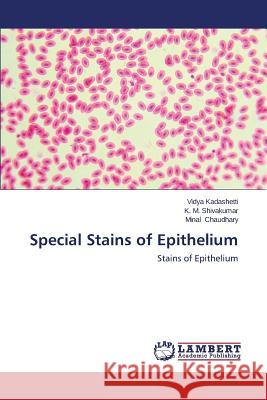Special Stains of Epithelium » książka
Special Stains of Epithelium
ISBN-13: 9783659627163 / Angielski / Miękka / 2014 / 76 str.
This monograph highlights the Special stains (histochemical methods) are used to help visualize and/or identify structures and substances in sections. It highlights the detail in tissues and cells, Although H&E is an essential everyday stain for many pathologists and researchers, sometimes a little extra help is required to reach a diagnosis, or further evaluate a tissue- usually to differentiate components that have already been seen in H&E-stained tissue sections, but need to be definitively identified. This is where the so-called 'special stains' come in handy. This term describes a large number of alternate staining techniques and histochemical procedures that are used in situations where H&E cannot provide all the information needed by a pathologist or researcher. These techniques use a variety of staining methods to more readily visualise components of a tissue using light microscopy.
This monograph highlights the Special stains (histochemical methods) are used to help visualize and/or identify structures and substances in sections. It highlights the detail in tissues and cells, Although H&E is an essential everyday stain for many pathologists and researchers, sometimes a little extra help is required to reach a diagnosis, or further evaluate a tissue- usually to differentiate components that have already been seen in H&E-stained tissue sections, but need to be definitively identified. This is where the so-called special stains come in handy. This term describes a large number of alternate staining techniques and histochemical procedures that are used in situations where H&E cannot provide all the information needed by a pathologist or researcher. These techniques use a variety of staining methods to more readily visualise components of a tissue using light microscopy.











